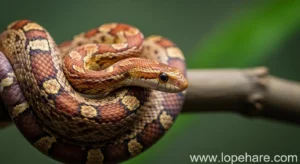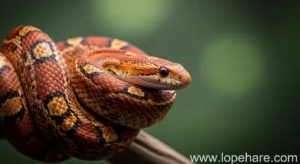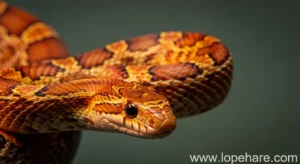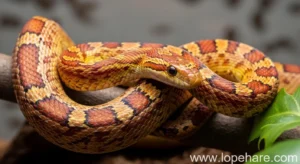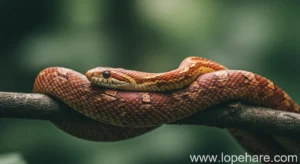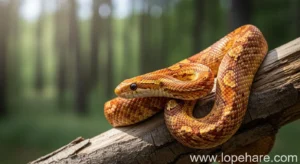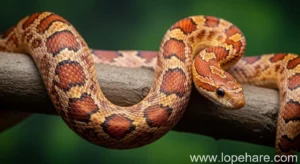
Snake Care
Handling Your Corn Snake: Building Trust and Avoiding Bites
At lopehare.com, we’ve helped countless small and unique pet enthusiasts understand their companions better. Corn snakes are popular first snakes due to their generally docile nature, manageable size, and striking patterns. However, even the calmest corn snake requires proper handling to ensure both their comfort and your safety. Building trust with your corn snake isn’t just about preventing bites; it’s about creating a positive relationship based on respect for their natural instincts. In this guide, we’ll walk you through the essential steps for handling your corn snake gently and confidently.
Why Handle Your Corn Snake?
Handling serves several crucial purposes:
- Health Checks: Regular handling allows you to inspect your snake for signs of illness, injury, shedding problems, or mites that might otherwise go unnoticed.
- Socialization: Gentle, positive handling sessions help your snake become accustomed to human interaction, reducing stress and making future care tasks (like cage cleaning or vet visits) easier.
- Exercise: Allowing your snake to explore under supervision during handling provides them with physical activity outside their enclosure.
- Bonding: While snakes don’t form emotional bonds like mammals, positive interactions build familiarity and reduce fear, leading to a calmer, more comfortable pet.
Getting Started with Handling
Patience is key, especially when you’re building trust with a new corn snake. Never rush the process.
- Acclimation Period: Allow your new corn snake at least 7-10 days (or even longer if they seem stressed) to settle into their new enclosure before attempting handling. Provide hides and ensure their environment is stable.
- Start Small: Begin by simply placing your hand in the enclosure without trying to pick up the snake. Do this for a few minutes each day, allowing the snake to investigate your hand on their terms. If they retreat, don’t push it.
- First Contact: Once the snake seems comfortable with your hand being present, try gently scooping them from underneath rather than grabbing from above (which can feel predatory). Start with very short sessions, just a few minutes long.
- Timing is Important: Avoid handling immediately after they’ve eaten (wait at least 48 hours to prevent regurgitation) or when they are in shed (their vision is impaired, making them more defensive).
Understanding Corn Snake Body Language
Snakes communicate their mood through their posture and movements. Learning to read these signals is vital for knowing when and how to handle them.
- Relaxed: Slow, smooth movements, flicking tongue exploring the air, body held loosely, may rest on your hand or arm. This is a good time to handle.
- Alert/Curious: Head raised, body slightly tense, actively exploring with tongue flicks. Still generally okay to handle, but be mindful of where their head is directed.
- Stressed/Fearful: Rapid movements, trying to escape, hiding head, coiling tightly, rapid tongue flicks. Stop handling or give them space.
- Defensive/Warning: S-shaped coil near the head, rapid jerky movements, hissing (less common in corn snakes but possible), quick head jabs (mock strikes). This is a clear warning. Do NOT proceed with handling.
- Ready to Strike (last resort): Often preceded by defensive signals, the snake may lunge quickly.
Respect the Signals: Never force a snake that is showing signs of stress or defensiveness to be handled. This erodes trust and increases the likelihood of a bite.
Proper Techniques for Handling
Knowing how to handle a corn snake gently involves using appropriate methods to make them feel secure.

- Support the Body: Never hold a snake just by the tail or head. Use both hands if necessary to support the majority of their body weight as they move, allowing them to glide through your fingers.
- Gentle but Firm: Be confident in your movements. Hesitant or jerky movements can make the snake nervous. Your grip should be secure enough that they don’t fall, but not so tight that you restrict their movement or squeeze them.
- Allow Movement: Let the snake explore. They will naturally want to move and climb. Allow them to crawl on your hands, arms, and shoulders, provided you are in a safe, controlled environment where they cannot escape.
- Short Sessions: Keep handling sessions relatively short, especially when starting – 5 to 10 minutes is often sufficient. Gradually increase the duration as the snake becomes more comfortable.
- Safe Location: Always handle your snake in a safe place, such as sitting on the floor or at a table with no precarious edges. This minimizes the risk of the snake falling or escaping.
Tips for Avoiding Bites
Even the most docile corn snake might bite if startled, feels threatened, or mistakes your finger for food. Here’s how to minimize the risk:
- Wash Your Hands: Always wash your hands before and after handling. Before, it removes enticing food scents (like rodents) that might cause a feeding response bite. After, it’s for hygiene.
- Avoid Feeding Time: Do not handle your snake just before, during, or immediately after feeding.
- Approach Calmly: Approach the enclosure slowly and deliberately. Avoid sudden movements or loud noises.
- Scoop, Don’t Grab: As mentioned, scoop from underneath. Avoid reaching directly down from above.
- Read the Signs: Pay attention to the body language discussed earlier. If your snake seems agitated, leave them be.
- Know the Difference: Understand that a bite is usually a defensive reaction or a feeding mistake, not aggression. Corn snake bites are generally harmless to humans, though they can be startling.
Building Trust and Regular Handling
Consistency is paramount for building trust with your corn snake. Aim for regular handling sessions, perhaps 2-3 times a week, once your snake is comfortable.
Table outlining a potential handling schedule progression:
| Phase | Duration After Getting Snake | Action | Session Length |
|---|---|---|---|
| Acclimation | First 7-10 days | Observe only | N/A |
| Introduction | Days 10-17 (approx.) | Hand in enclosure | 5-10 mins/day |
| First Handling | Day 17 onwards (if ready) | Gentle scoop & hold | 3-5 mins |
| Regular Handling | Once comfortable | Scoop & allow exploration | 10-20 mins, 2-3 times/week |
Be patient; some snakes take longer than others to become accustomed to handling. Never force interaction if the snake is clearly distressed. A positive experience, even if short, is far better than a long, stressful one.

End on a Positive Note: Always return your snake to their enclosure calmly and gently. Ensure their environment is safe and secure when you put them back.
Mastering the art of handling is a rewarding part of keeping a corn snake. It strengthens your connection with your pet, ensures their well-being, and allows you to fully appreciate these fascinating reptiles.
Citations
- Corn Snake. Wikipedia. Accessed [Insert Date Accessed].
- [Optional: Link to a relevant scientific article or veterinary resource if used for specific data or claims]
